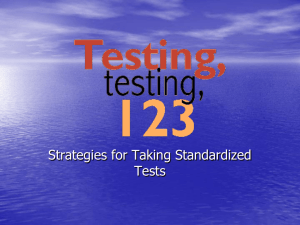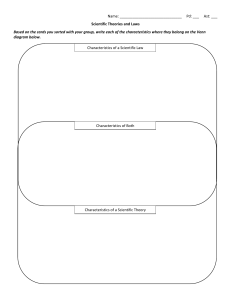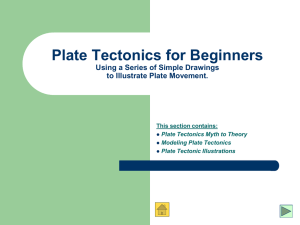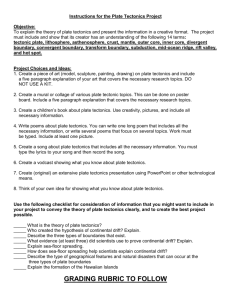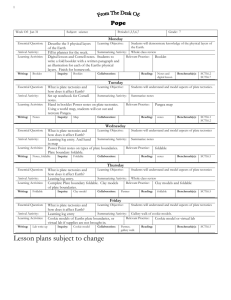Social Studies OGT Test Taking Strategies & Test Breakdown
advertisement
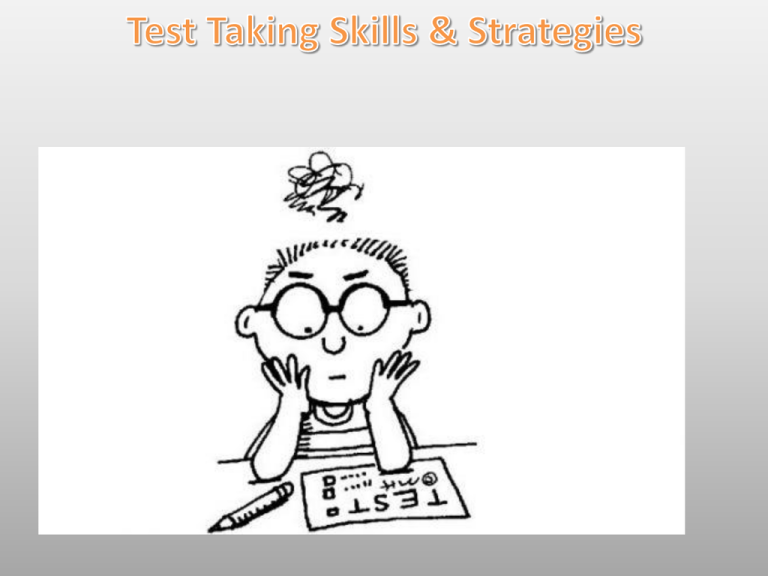
Lesson Objectives: During this lesson you will receive information and strategies on the following topics: 1. 2. 3. 4. 5. General Strategies Multiple Choice Open-Ended Responses Social Studies OGT Breakdown Glossary/Terms General Strategies 1. Before you begin, preview the test and budget your time. You will have 2 hours to take this test; with 38 questions to complete, you should be through 19 questions by the end of the first hour. 2. Be sure you understand the directions and what the question is asking. 3. Circle key words in the question and the passage or chart. 4. Use all the time allotted for the test. Go over your answers if there is time. 5. Respond to all the questions. If you reach a difficult question and you cannot answer it right away, mark it in your test booklet and go back to it later. Test Anxiety A certain amount of anxiety is normal and will help you focus on the test. Too much anxiety can negatively affect your performance. The following strategies may help you in a testing situation. 1. 2. 3. 4. Relax, take some deep breaths, and have confidence in your abilities. Listen to music before the test. Remember this test is just one indicator of your learning. The test makers do not expect all students to know all the answers. Multiple Choice Strategies for Success 1. Read the questions FIRST. • Prior to reading the selection, review all questions to determine what you will be asked. Do not read the answer choices yet. • Make sure you know what is being asked in the question. • Beware of trick words like “always” and “never” in a question or answer. 2. Next, read the passage. • When reading the passage, mark places you think will help you answer the questions. • You may write on the test booklet. Make notes in the margins of anything you think might help you answer the questions. • Be careful not to make stray marks in the answer booklet. Your answers are machine scored; stray marks may be read as an incorrect answer. Answer the Questions 1. Eliminate Wrong Answer Choices. • Read the question and anticipate what you think the answer might be. • Be sure to read all your answer choices. • Cross out answers you can eliminate. Even if you have no idea about the answer, by eliminating one or two answers you can increase your chances as much as 50% if you need to make a guess. • Don’t fall for answers that are partially correct or seem correct because some of the same words or themes are used. These answers can look right because they use facts and language from the text. • Watch out for trick words such as “not” or “except” Social Studies OGT Breakdown Social Studies # of Items 38 # of Points 48 # of Multiple Choice 32 # of Short-Answers 4 # of Extended Responses 2 Social Studies Test Question Breakdown Category MC. SA ER History 8 1 1 People in Society & Geography 6-10 1 0-1 Econ, Gov, Citizenship, Rights of the People 7-11 1 0-1 Social Studies 7 1 0 Social Studies Glossary Understanding the following terms will help you to better understand social studies and citizenship questions on State and Standardized Tests: 1. Analyze: 2. Compare: 3. Describe: 4. Evaluate: 5. Explain: 6. Formulate: 7. Infer: 8. Predict: 9. Summarize: 10. Support: 11. Trace: Open Ended Responses Research shows that the most points are lost on state tests in open-ended questions. Following these simple steps will help you to use your knowledge to the best of your abilities. Reading the Question: When you read an open-ended question, realize that some of the question may include information needed to respond. For example: Sample Question Earth’s crust is divided into many crustal plates. Their activities are described as plate tectonics. List two effects of plate tectonics and explain how plate tectonics cause each effect (4 points). The underlined sentences give needed information about the Earth’s crust and plate tectonics. The test question will include how many points will be awarded for the complete answer. Some are 2 point questions (short answer) and some are 4 point questions (extended response). Make sure you are addressing each part of the question. Be sure to go back after your response has been written to make sure you addressed each part of the question. Answering the Question: Step 1: Restate the question in your response. Sample Question What effect does the constant rain have on the people of the city? Give one example from the passage that supports your choice. (2 points). Sample Answer Although the rain was needed, the effect that the rain had on the people of the city was…………….. An example from the passage that shows how the people felt is “………………………..” Sometimes two responses are required from the same question. Sample Question Identify two consequences of the contacts between the new settlers of the West and the Native Americans during the late 1800s (2 points). Sample Answer The first consequence of the contacts between the Native Americans and the new settlers of the West was……….. The second consequence of the contacts was……………….. Step 2: Provide details that support your answer A 2-point question will require two items of support, a 4-point question requires four items of support. Missing Points on Short Answer & Extended Response Questions Test evaluators gave the following reasons for missing points on an OGT short answer/extended response question. 1. 2. 3. 4. 5. The response was too vague. The response was off topic and did not answer the question. The response was not accurate. The student restated the question but did not give any details to support their answer. No specific examples were given to support the answer. Misconceptions about Short Answer & Extended Response Questions 1. True or False: You will lose points if you do not write your short answer or extended response answers in paragraph form using complete sentences. 2. True of False: The more you write, the better your score. 3. True or False: You are allowed to use bullet points and outlines to answer your short answer and extended response questions. 4. True or False: If you skip all of the short answer and extended response questions, you will fail the test even if you get all of the multiple choice questions correct. 5. True or False: the short answer and extended response questions are always the most difficult questions on the test.
